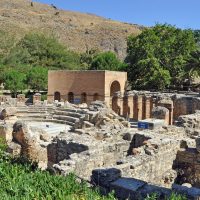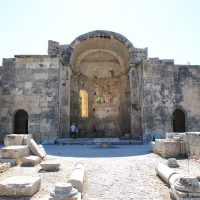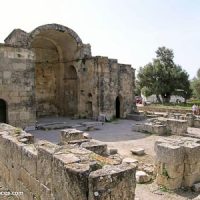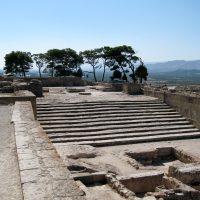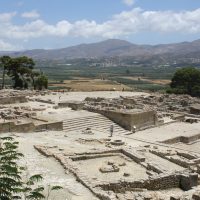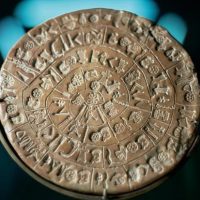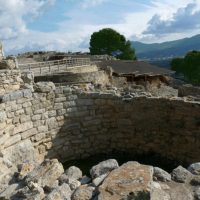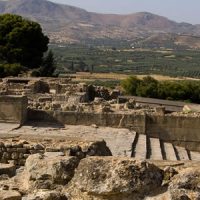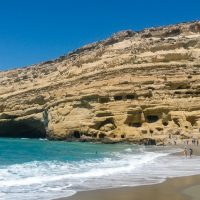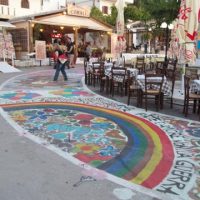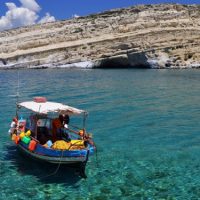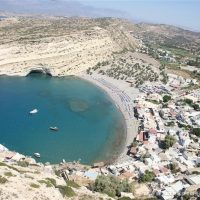TOUR 5 – 01 Jul 2017
TOUR 5 – 01 JULY 2017, SATURDAY
EXPLORE THE SOUTH CRETE!
GORTY’S ARCHEOLOGICAL SITE
Gortys, also known as Gortyn or Gortyna is one of the most important cities in Crete with an unbroken history of 6,000 years and one of the most extensive archaeological sites in Greece. It lies in south central Crete in the fertile Mesara plain, the site of the first human habitation of Crete at the end of the Neolithic period (5th millennium BC). Gortys was one of the first areas of Crete to attract the attention of researchers and archaeologists as early as the period of Turkish occupation in the late 19th century, when Minoan civilisation was still a matter of conjecture and myth. Excavations in the wider area of Gortys brought important buildings and finds to light, although a large part of the Roman city still remains unexplored today. The most important finds are displayed in Heraklion Archaeological Museum. There is evidence of human occupation in Gortyn as far back as the Neolithic era (7000 BC). Many artifacts have been found from the Minoan period, as well as some from the Dorian (c. 1100 BC). Although it is disputed whether the city was in development during the Minoan period, it is true that the city was in existence during the heroic times, because it is referenced by Homer, among the cities of Crete that were flourishing and were well fortified. The city was complimented by Plato and many others. The city of Gortyn surpassed the prominence of Phaistos during the first millennium BC, Phaistos having been the most significant city on Crete during Minoan times. The period of its great prosperity, however, coincided with the Hellenistic era. Gortyn was the most powerful and prosperous city of Crete and took hegemony of the island, dominating the entire valley from Messara to Levina and, later in the 2nd century after the destruction of Phaistos, extended its power to Matala.
.
PHAESTUS (FESTOS) ARCHEOLOGICAL SITE
Phaistos is one of the most important archaeological sites in Crete, with many thousands of visitors annually. Phaistos also transliterated as Phaestos, Festos and Latin Phaestus, currently refers to a Bronze Age archaeological site at modern Phaistos, The name is substantiated by the coins of the classical city. They display motifs such as Europa sitting on a bull, Talos with wings, Heracles without beard and being crowned, or Zeus in a form of a naked youth sitting on a tree. The Minoan palace of Phaistos corresponds to a flourishing city which arose in the fertile plain of the Messara in prehistoric times, from circa 6000 BC to the 1st century BC, as archaeological finds confirm.
The history of the Minoan palace of Phaistos, like that of the other Minoan palaces of Crete, is a turbulent one:The first palace of Phaistos was built in circa 2000 BC. Its mythical founder was Minos himself and its first king was his brother Radamanthys.Most of the buildings visible today belong to the Neopalatial period (1700 – 1450 BC).
The Phaistos Disc was discovered in the Minoan palace-site of Phaistos. The disk is about 15 cm (5.9 in) in diameter and covered on both sides with a spiral of stamped symbols. Its purpose and meaning, and even its original geographical place of manufacture, remain disputed, making it one of the most famous mysteries of archaeology. This unique object is now on display at the archaeological museum of Heraklion.
.
MATALA BAY
Matala was the port of Phaistos during the Minoan period. In the year 220 BC. Matala was occupied by the Gortynians, and during the Roman period, became the port of Gortys. Matala is located on the boundaries of the plain Messara and Asteroussia Mountains at the exit of a small valley, which forms a large enclosed bay with nice view to the islands of Paximadia. It is one of the most popular tourist destinations of Crete and certainly the most famous beach. The bay is a beautiful long sandy beach, 300m long, with fine gravel and crystal clear deep water. Matala is identified with the man-made caves carved out of the rock thousands of years ago in the steep cliffs that rise above the north side of the bay and beach. The artificial caves in the cliff of the Matala bay were created in the Neolithic Age. In the 1st and 2nd centuries, the caves were used as tombs. One of the caves is called “Brutospeliana” because according to the legend it was frequented by the Roman general Brutus. In myhtology it is believed that when Zeus seduced the princess Europa in the form of a white bull, he crossed the sea and brought her to the beach of Matala. There he changed into an eagle and flew her to Gortys.
In the 1960s, a community of backpacking hippies had settled in Matala.The hippies came from the four corners of the earth to Matala, where they found ready-made homes in the caves. A unique festival on the sandy beach beneath the caves made Matala famous during the hippie era of the 1960s and ‘70s. Matala attracted international attention in the early 70s when Joni Mitchell released her critically acclaimed album ‘Blue’, which detailed her experiences whilst living in the caves with the young hippie travellers, enjoying the tranquility of Matala Beach.




